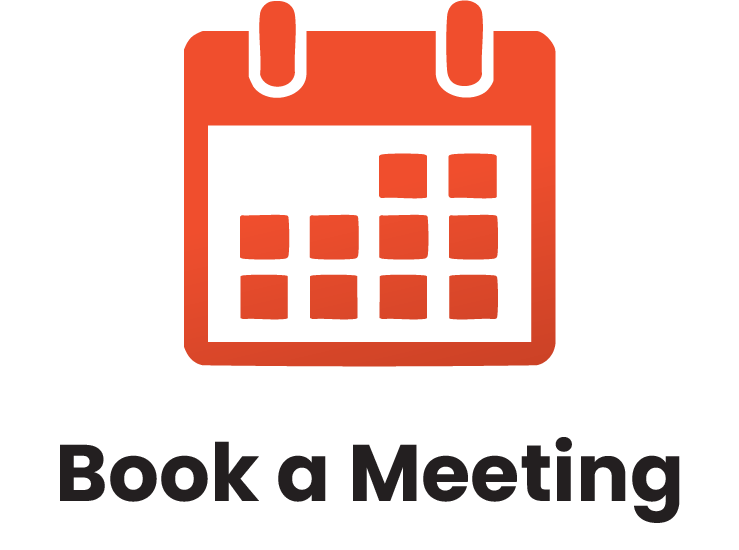Interactive training sessions led by experienced facilitators.
What is In-Person, Instructor-Led Training?
Our in-person training is delivered by a live facilitator who works directly with your team at your location. It’s our most popular format because it allows for real-time interaction, hands-on learning, and direct support.
Every session is tailored to your team’s specific goals, industry, and challenges—no generic, one-size-fits-all programs. Whether it’s a single session or a full training series, we design the experience to be relevant, practical, and fully aligned with your needs.
What is Live Webinar Training?
Live webinars are facilitator-led training sessions delivered online in real time. They’re ideal for teams working in different locations or with busy schedules.
This format offers shorter, more frequent sessions that are easy to coordinate—making it a convenient option for organizations with remote or distributed teams.
What is Virtual Classroom Training?
Virtual Classroom training is live, instructor-led training delivered online. It offers the same interactive experience as in-person sessions, with real-time discussions, group activities, and instructor feedback.
It’s a flexible option for organizations that want to reduce travel, save costs, or better fit training into busy schedules.
What is a Lunch & Learn Session?
Lunch & Learn sessions are short, facilitator-led training sessions delivered in person or online—typically during the lunch hour. They focus on specific topics or skills and offer a quick, engaging way to learn without a full-day commitment.
These sessions can be offered as one-time events or as part of a series, making them a great option for ongoing, bite-sized learning.
Online Learning
Enjoy our self-paced option and learn from anywhere!
$279.00 USD
Workplace Harassment: What It Is and What To Do About It
In 2012 alone, the US Equal Employment Opportunity Commission ordered that $365,400,000 (that’s 365.4 million dollars!) be paid out for discrimination and harassment charges. No wonder companies are working to be more proactive in preventing harassment.
But how do you prevent harassment from occurring? What sorts of policies should be in place? What should managers do to protect their employees? And if a complaint is filed, what will we do? All of these questions (and more!) will be answered in this two-day workshop.
LEARNING OBJECTIVES
Learning Objectives
AThis two-day workshop will teach participants how to:
- Explain what is acceptable behavior in the workplace and what is not, and why
- Apply the benefits of harassment training
- Define the various types of harassment, including sexual harassment
- Assist in creating a harassment policy
- State some ways to prevent harassment and understand what role they can play
- Demonstrate some ways to protect themselves from harassment
- Know what to do if they are harassed or accused of harassment
- Understand the complaint process, from the complaint to the reply, to mediation or investigation, to a solution
- Identify situations where mediation is appropriate, and understand how mediation works in those situations
- Describe appropriate solutions for a harassment incident
- Know what to do if a complaint is false


COURSE OUTLINE
Help their workplace return to normal after a harassment incident
Defining Harassment
This session will look at legal, literary, and reasonable man/woman definitions of harassment.
Defining Sexual Harassment
This session will discuss sexual harassment in a lecture and small group work. Topics covered include the definition of sexual harassment, the components of harassment, and common scenarios that could be construed as harassment.
The Purpose of Training
In this session, we will discuss what kind of harassment training can benefit an organization.
Creating a Harassment Policy
The best way to prevent harassment from occurring is by setting a clear policy, educating employees about it, and enforcing it. We will discuss some basics of creating, implementing, and monitoring a policy, plus some training points.
Other Prevention Strategies
Next, participants will explore some other ways of preventing harassment in groups.
Nipping it in the Bud
One of the most important prevention strategies is for managers to carefully monitor their workplace. During this session we will use a lecture and a role play to talk about how managers can do this.
Protecting Yourself
There are many things that you can do to minimize your risk of being harassed or of being perceived as a harasser. We will discuss six of them.
What If It Happens to Me?
During this session we will discuss what you can do if someone is harassing you, including techniques for saying no. Participants will then practice these techniques during a role play.
What If It’s Happening to Someone Else?
There will often be situations where a manager thinks or knows that harassment is occurring, but a complaint has not been filed. We will discuss what to do in this situation.
Someone Has Filed a Complaint Against Me!
If you are in the situation where someone has filed a complaint against you, do not panic. There are several steps that you can take to deal with the situation appropriately, all of which will be discussed in detail during this session.
Addressing a Complaint
No matter how proactive you are, most employers receive a harassment complaint at some point in time. We will discuss the four key components of dealing with a complaint fairly and appropriately.
Handling False Complaints
If you suspect that a harassment complaint is false, you must be very careful when dealing with it. This session will discuss some things that you can do in this situation.
Mediation
When the claimant decides to file a complaint, mediation may be offered as an alternative. We will discuss what mediation is, when it is and isn’t appropriate, and how the process may work. Participants will also have an opportunity to role play mediation.
Investigating a Complaint
Investigating harassment complaints often requires special training and skills. During this session, we will cover some basics of investigation, including when a complaint should and should not be investigated, who should be involved, what the investigation process should look like, and how results can be reported.
Making the Decision
During this session we will talk about who should make the final decision about the complaint. We will also discuss when you should involve legal counsel.
Creating Solutions
There are three possible solutions to a harassment complaint: solutions for the complainant, solutions for the respondent, and solutions for the organization. We will explore possibilities for each case during this session.
After It’s Over
Once the harassment complaint has been resolved, everyone should try to get back to normal life. This session will discuss how managers and the organization as a whole can help employees make this transition.
Skill Application
The afternoon of day two will be spent role playing four stages of the harassment process: the initial consultation with an advisor, the filing of a formal complaint, an investigation, and the decision. Detailed case files are provided with the course.


















